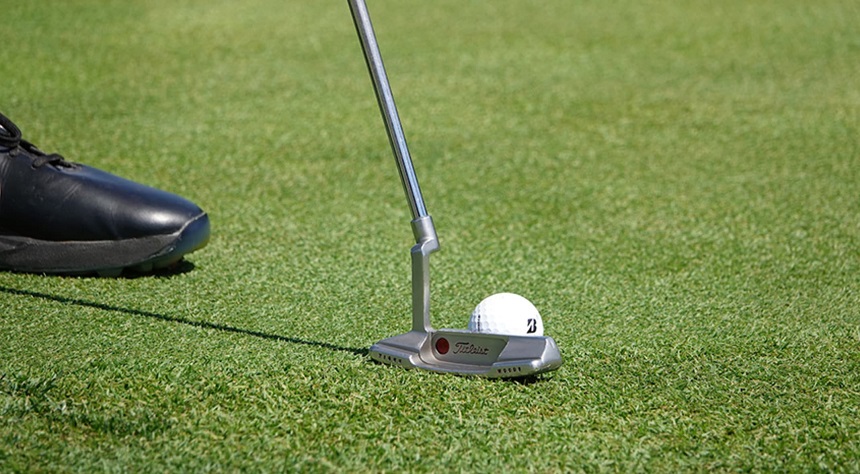
Though it seems like a minor detail, the lie of your golf club can have a big impact on your accuracy. If the lie angle is off by a single degree, it can mean that your ball ends up four yards off the line. The wider the lie angle becomes, the worse your accuracy will become.
Because of this, it’s common for professional golfers to make minute changes to their clubs to get the ideal lie angle. The good news is that you don’t need to pay a golf shop to do this. You’ll be able to adjust the lie angle at home, here are the steps to follow.
To find the lie angle, you have to place the club on a flat surface. Then, record the angle between the ground line and the club shaft.
There are a few signs that you might have the wrong type of lie angle. The most common complaint is that your accuracy is suffering. You might find that the ball is either swinging to the left or right, depending on the type of lie. For more information about why this angle is so important, check out this article.
If you are planning to adjust the lie angle at home, you’ll need to make sure that you are using the correct device. Some people have tried to use vices or even hammers. These tools will wreck your clubs.
To do the job properly, you’ll need to use a loft and lie machine. You should be able to find one in a golf repair shop. Before you buy one, make sure that it will be compatible with your golf clubs.
Once you have the machine, you’ll need to put the golf club inside. You’ll need to refer to the owner’s manual when you are doing this. It’s important to make sure that the club will be square. This will give you accurate measures, so you can get the right angle for the lie. Next, you’ll need to adjust the toe stop. This ensures that the club will be securely held within the machine while you adjust the angle.
Once your golf club is in the machine, you’ll need to record the lie and loft angles. This should be a fairly simple procedure.
It should be noted that the angle might not be the same as the one provided by the manufacturer. In a second-hand club, it could be a sign that the angle of the club has been adjusted before. If you’ve had the club for a long time, the angle might have been changed through years of play.
Before you can do this, you’ll need to find the ideal lie angle. There are a few ways to do this. The National Club Golfer recommends drawing a straight line down a few golf balls. This will measure the angle the ball is hit at. If it lands angled towards the toe, you should create a flatter lie. If they are angling towards the heel, you’ll need to make the lie more upright.
Now it’s time to start adjusting the angle. This is a delicate process. You don’t want to apply too much pressure and end up snapping the end of the golf club off. Because of this, you should adjust the changes in the angle slowly. You don’t want to adjust it more than two degrees. If you do, you’ll be placing a lot of pressure on the head of the golf club. Sometimes, after five degrees of adjustment, the club will be damaged.
Trying to get enough pressure on the hosel to adjust the angle will take a lot of muscle strength. This is the area that most people will struggle with. Because of this, it’s common to push down on the bending bar in small bursts.
Once you have made the adjustments, you can put the bending bar down and check the new lie angle. This will let you see if you have the right angle, or if you need to do a little more work. When you are happy, you can take the club to the range.
Give it a few sessions with the new angle to see if it is working for you. It can help to use a golf simulator. This will give you data on how you performed before and after you have made the adjustment. If you like the new angle, it’s best to apply the changes to all your clubs. This will ensure that you can make consistent shots when you are on the green.
Once you’ve found the ideal angle, you just need to maintain it. Usually, this won’t be a very difficult task. You’ll just need to check the loft and lie angles at the start of each season. If you play a lot, you might need to check it twice a season. If you need, you’ll be able to make a small adjustment.
When playing golf, there are plenty of things that can impact your accuracy. Many people focus on improving their stance and the speed of their slice. But it’s important to perfect the basics first. Getting the right lie on your angle is essential, just a degree off can translate to big problems. Thankfully, adjusting the angle of your golf club lie is a relatively easy procedure. You should be able to get it done in an afternoon. Even better, you will be able to make these adjustments at home. All you need is a simple loft and lie machine and a little elbow grease. So, find the ideal lie angle for your clubs and improve your accuracy on the green.





